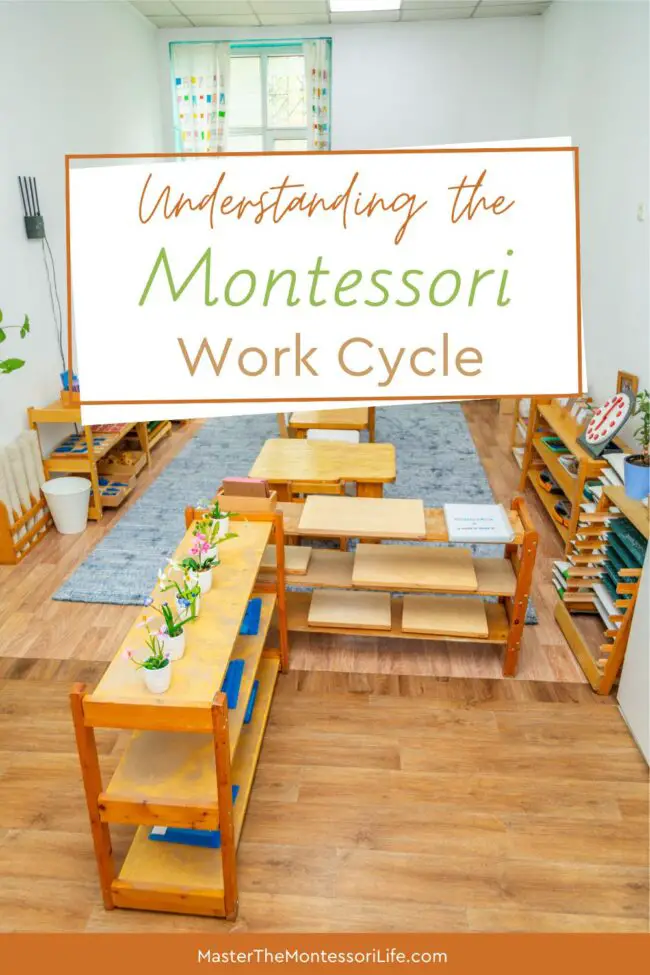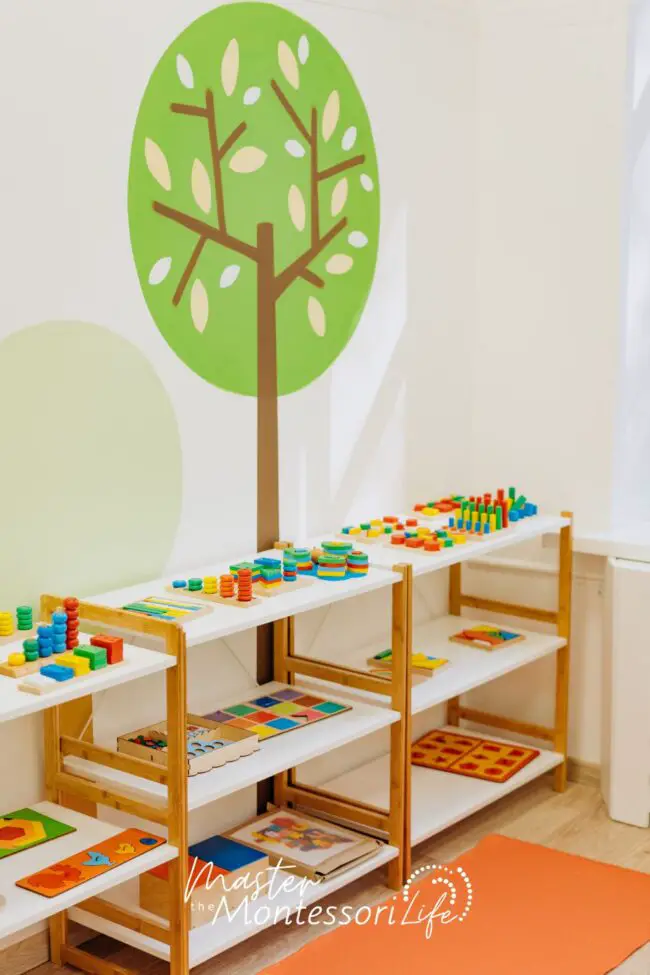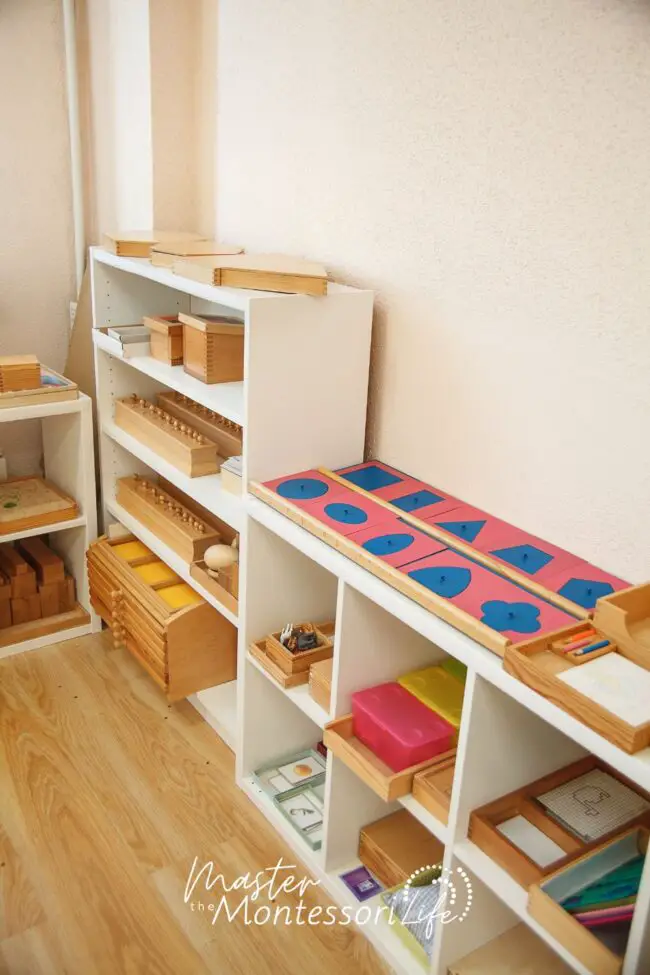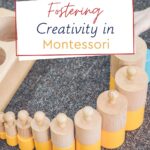The Montessori Work Cycle is a foundational element of the Montessori Method. It promotes independence, concentration, and a love for learning through structured time where children choose and engage deeply with their work.
For Montessori guides, educators, and parents, grasping the details of the work cycle is crucial for fostering an environment where children can thrive. But what exactly is the work cycle, and how does it benefit children? Let’s explore.

What is the Montessori Work Cycle?
The Montessori Work Cycle refers to an uninterrupted period of time, typically 2-3 hours, during which children engage in self-chosen activities within a prepared environment. This cycle allows children to fully immerse themselves in their tasks, fostering focus and self-discipline.
During this time, children may select from Montessori materials and follow their natural interests, encouraging exploration and learning at their own pace.
A critical element of the work cycle is its three-step process:
- Beginning: The child chooses an activity that sparks their interest.
- Middle: The child enters deep concentration, fully engaging with the work.
- End: The child completes the activity, tidies up, and moves on to another task or takes a break.
This cycle encourages children to manage their time and develop independence while solidifying their learning.

Why is the Work Cycle Important?
The uninterrupted work cycle is key to the Montessori philosophy because it supports the development of several critical skills.
Firstly, it nurtures concentration. When children are free to engage in an activity without interruption, they learn to focus deeply, an ability that translates well into lifelong learning and problem-solving.
Secondly, it cultivates independence. By making choices about their activities, children build confidence in their decision-making abilities and develop a sense of autonomy.
Additionally, the work cycle respects the natural learning process. Many traditional environments disrupt a child’s peak moments of concentration with scheduled breaks or transitions. The Montessori Work Cycle, however, embraces a child’s natural rhythm, allowing them to absorb knowledge actively, facilitating a deeper and more meaningful understanding of concepts.
Supporting the Work Cycle at Home
Parents and educators can implement the Montessori Work Cycle in both schools and home environments by preparing a calm, orderly space where children can focus. Materials should be readily accessible and inviting, encouraging children to independently start activities.
It’s equally important to establish a daily routine that consistently includes a dedicated work cycle period. For parents new to Montessori, tools like the Planning Montessori at Home Digital Book can provide guidance on setting up and maintaining this structure.
Additionally, the Teaching Montessori at Home Digital Book offers in-depth strategies for supporting your child’s development during the work cycle, ensuring they receive the fullest benefits of this method.

Enriching the Work Cycle Through Observation
Observation plays a vital role in optimizing the Work Routine. By observing children during this period, parents and guides can identify their interests, strengths, and challenges, tailoring future lessons and materials to meet their needs.
The Montessori Cycle of Work also provides opportunities to help children refine their skills. For instance, if a child struggles with a particular material or loses focus, this signals an area where gentle guidance might be provided. The act of observing without interrupting ensures the child maintains ownership of their learning while benefiting from the prepared adult’s support behind the scenes.
Closing Thoughts
The Montessori Work Cycle forms the backbone of the Montessori learning environment, allowing children to thrive through independence, focus, and purposeful activity. Whether you’re an educator shaping lessons in the classroom or a parent cultivating a Montessori experience at home, understanding and supporting the work cycle is a powerful way to foster a love for learning.
If you’re ready to take your Montessori practice to the next level, explore more helpful resources at Master the Montessori Life. Don’t forget to check out our shop for tools like the Starting Montessori at Home Digital Book to simplify your Montessori implementation and better support your child’s work cycle. Happy learning!
You might also enjoy these relevant topics:
- Montessori Culture: Transportation on Land
 One of the most exciting areas in the Montessori curriculum is the study of transportation on land.
One of the most exciting areas in the Montessori curriculum is the study of transportation on land. - Step by Step Curriculum of Montessori Education
 As a parent and Montessori Guide, I know that you are here looking for some guidance in Montessori education.
As a parent and Montessori Guide, I know that you are here looking for some guidance in Montessori education. - Hands-on learning made easy with the Montessori Pledge of Allegiance lesson
 Teaching children the importance and meaning behind the Pledge of Allegiance can be a meaningful addition to any Montessori or homeschool classroom—but where do you start?
Teaching children the importance and meaning behind the Pledge of Allegiance can be a meaningful addition to any Montessori or homeschool classroom—but where do you start? - Montessori from the Start: Preparing a Montessori Environment for Your Newborn
 Preparing a Montessori environment for your newborn hasn’t been easier than now! Let me give you some helpful tips.
Preparing a Montessori environment for your newborn hasn’t been easier than now! Let me give you some helpful tips. - Essential Montessori Beliefs (Part 1)
 The Montessori philosophy is well known for its unique blend of independence, respect, and thoughtful guidance. Here are some essential Montessori beliefs that you should know and keep in mind.
The Montessori philosophy is well known for its unique blend of independence, respect, and thoughtful guidance. Here are some essential Montessori beliefs that you should know and keep in mind. - Fostering Creativity in Montessori
 The Montessori method has long been celebrated for its unique way of fostering creativity.
The Montessori method has long been celebrated for its unique way of fostering creativity.







Leave a Reply